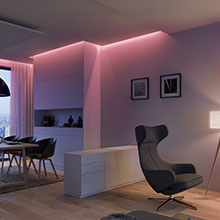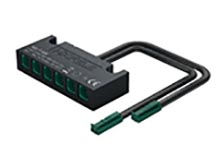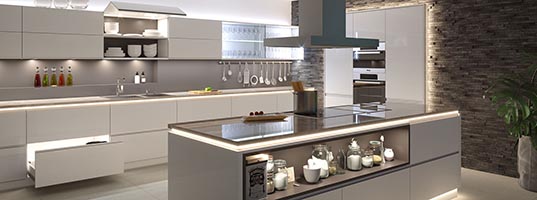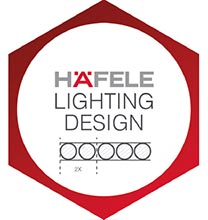What is a Lighting System?

Lighting can make such an impact on the way a house looks and feels. Lighting designs and systems are often an afterthought in a renovation or revamp, but are actually such a crucial aspect which can change the aesthetic of a room once the sun goes down. With traditional lighting becoming more and more obsolete, installing a lighting system in your project will give your customers a variety of lighting options and much more flexibility.
Types of Lighting
There are 3 core types of lighting used in lighting design, and these all have different functions.
 Ambient Lighting
Ambient Lighting
Ambient lighting (general or background lighting) is the type of lighting that delivers global illumination to a room. These lights are often most used when you need a whole room to be lit up, and the most common sources include downlighters, wall lights and large pendants.
Task Lighting
Task lighting provides extra illumination to a targeted space, so for example, a desk lamp or standing lamps as these provide more light for completing work or adding light for specific tasks.
Mood or Accent Lighting
This type of lighting is often used to highlight specific objects or features in a room, such as artwork, TVs, cabinets etc. LED strip lighting is often a source for mood lighting.
Drivers & Components
In order to provide smart lighting systems to  a home, you’ll need to install a LED driver which helps regulate the power level throughout the LEDs in order to ensure high performance. Drivers are crucial as they can provide the right amount of electricity to the LEDs, without overloading them or providing a voltage that is too high. Every LED light system needs a driver to operate, which is why many LEDs designed for household use, contain an internal driver instead of an external driver which is usually separate from the LED.
a home, you’ll need to install a LED driver which helps regulate the power level throughout the LEDs in order to ensure high performance. Drivers are crucial as they can provide the right amount of electricity to the LEDs, without overloading them or providing a voltage that is too high. Every LED light system needs a driver to operate, which is why many LEDs designed for household use, contain an internal driver instead of an external driver which is usually separate from the LED.
To install a fully integrated lighting system, you need to make sure you’ve installed the necessary components, which may include:
- Basic Light Controls - On/Off switches and touchscreen panels to enable easy access.
- Sensors - In order to recognise when someone enters a room or leaves a room.
- Dimmer Switches - To enable mood lighting and change the ‘feel’ of a room.
- Automation - To set specific ‘scenes’ and allow for ease of access via smartphones and voice commands.

Mesh Lighting Systems
In today’s ‘smart’ world, Bluetooth mesh lighting has made it even easier to provide top-quality lighting from different vendors. Mesh systems allow a user to control many different systems and lights from one key point, whether that’s a mobile phone, smart device or a switch. Bluetooth mesh works by making each device communicate with another, so instead of having to rewire or link multiple lights together, it can all be done with the push of a button.
The difference between Bluetooth mesh lighting and WiFi mesh lighting is that the former isn’t controlled from one specific device, such as a router. Any of the devices connected in a Bluetooth mesh system can control the other devices. This allows for much more flexibility when setting up a mesh lighting system. Installing a lighting system can future-proof your customer’s space, with the ease of being able to change the atmosphere through lighting.
 At Hafele, we have a range of lighting systems for the home, from brands such as Nimbus and Luminate, who can provide the equipment you need to update your client’s lighting system. We also provide our lighting design service which is completely tailored around your client’s requirements, meaning that no matter the space, we’ll be able to provide you with the best quote, free of charge.
At Hafele, we have a range of lighting systems for the home, from brands such as Nimbus and Luminate, who can provide the equipment you need to update your client’s lighting system. We also provide our lighting design service which is completely tailored around your client’s requirements, meaning that no matter the space, we’ll be able to provide you with the best quote, free of charge.










